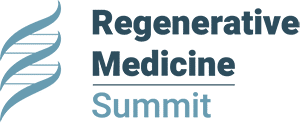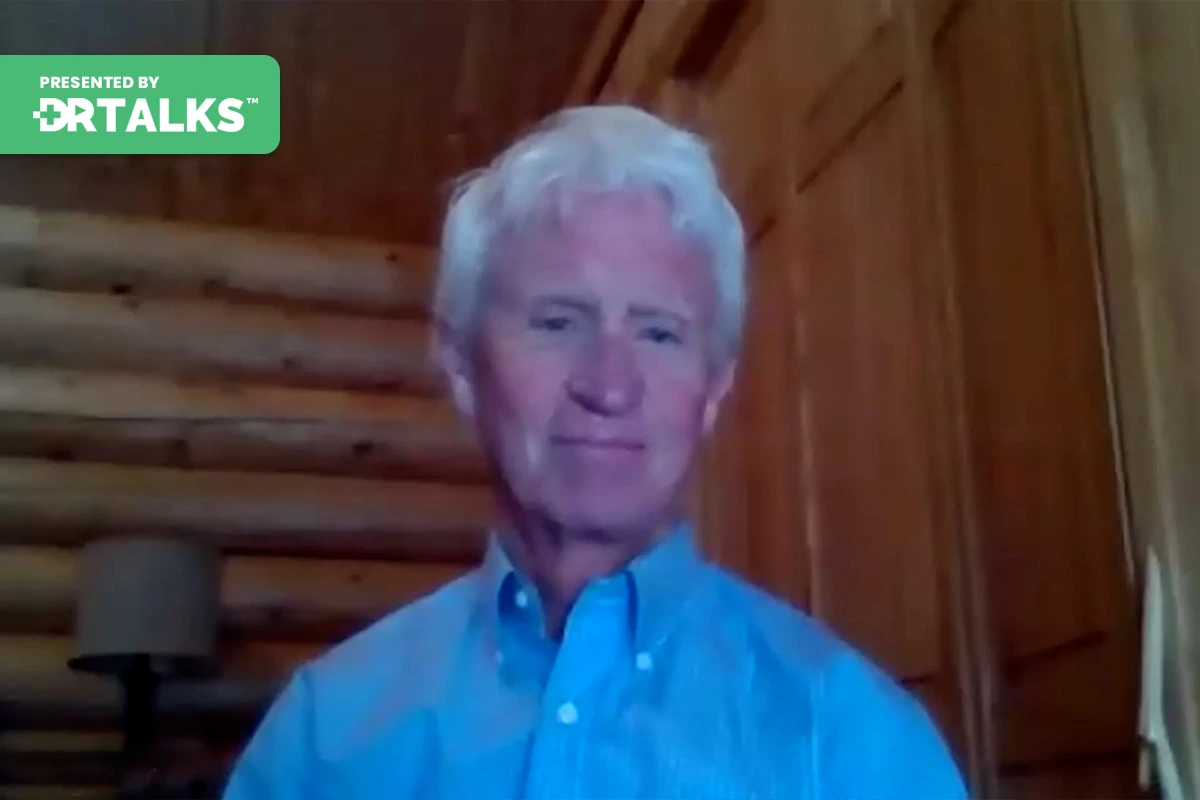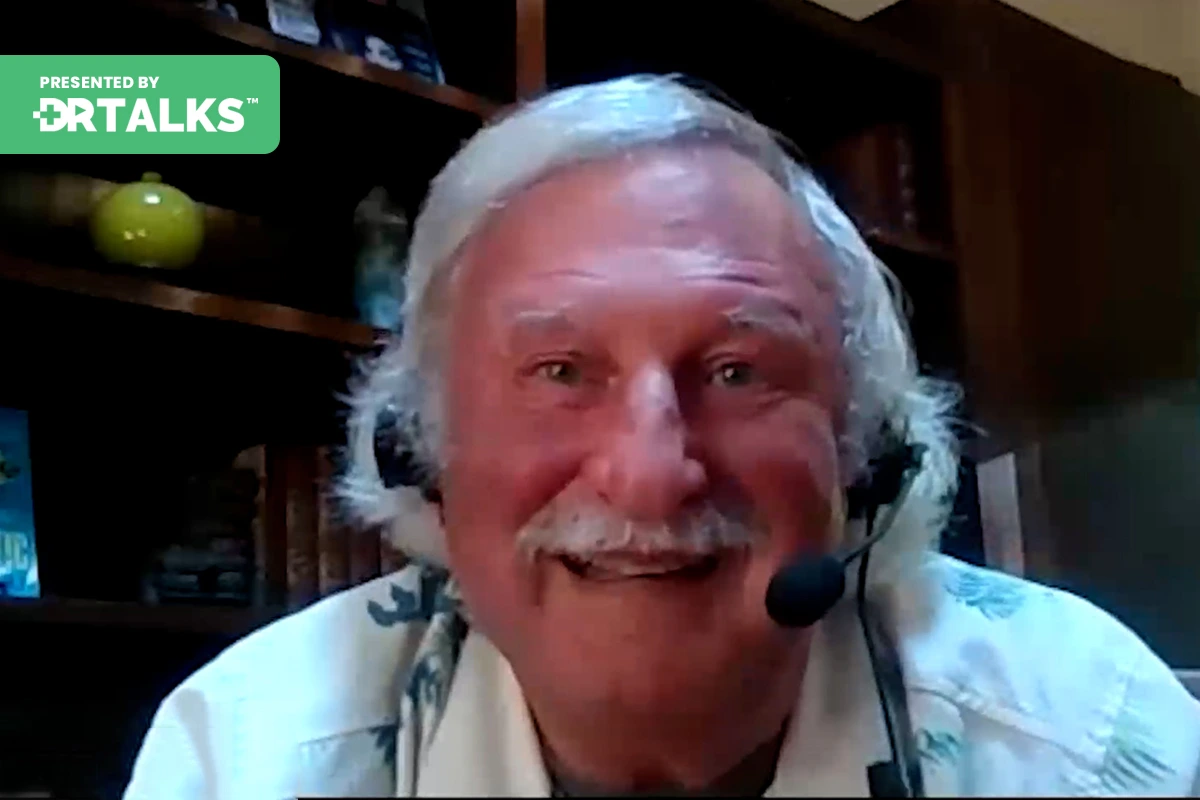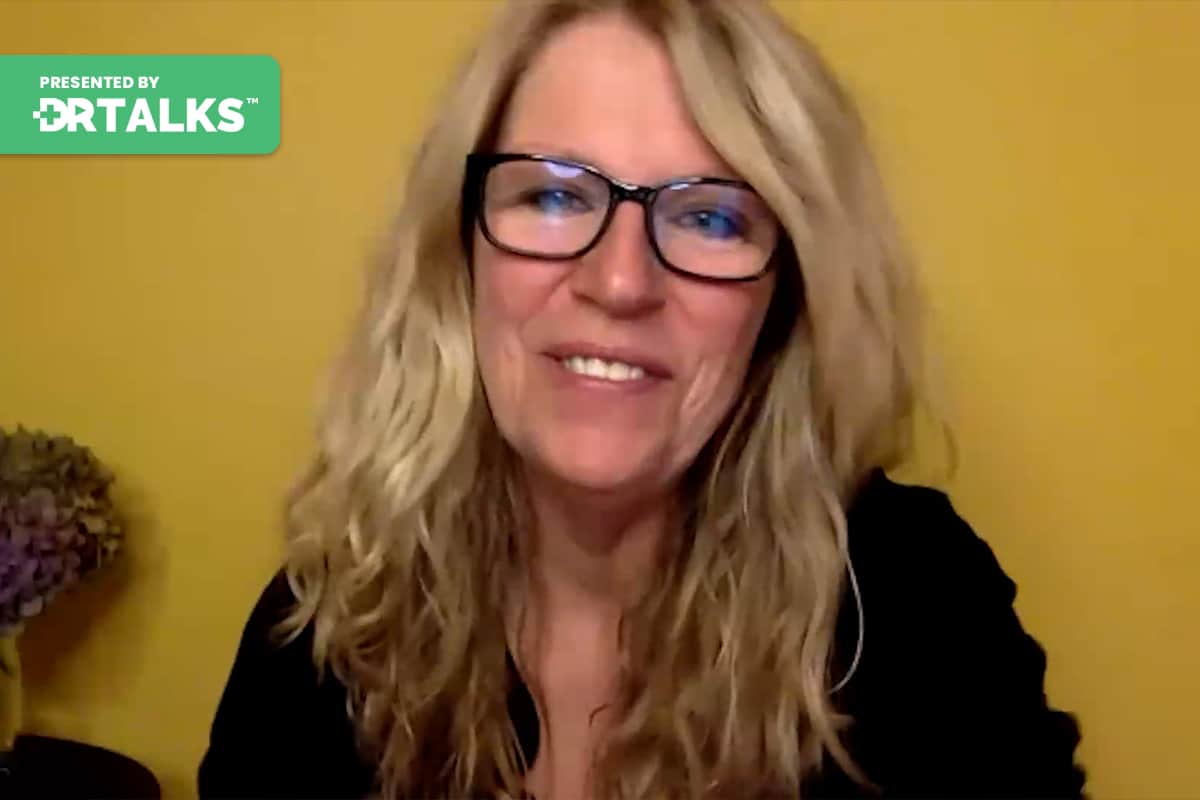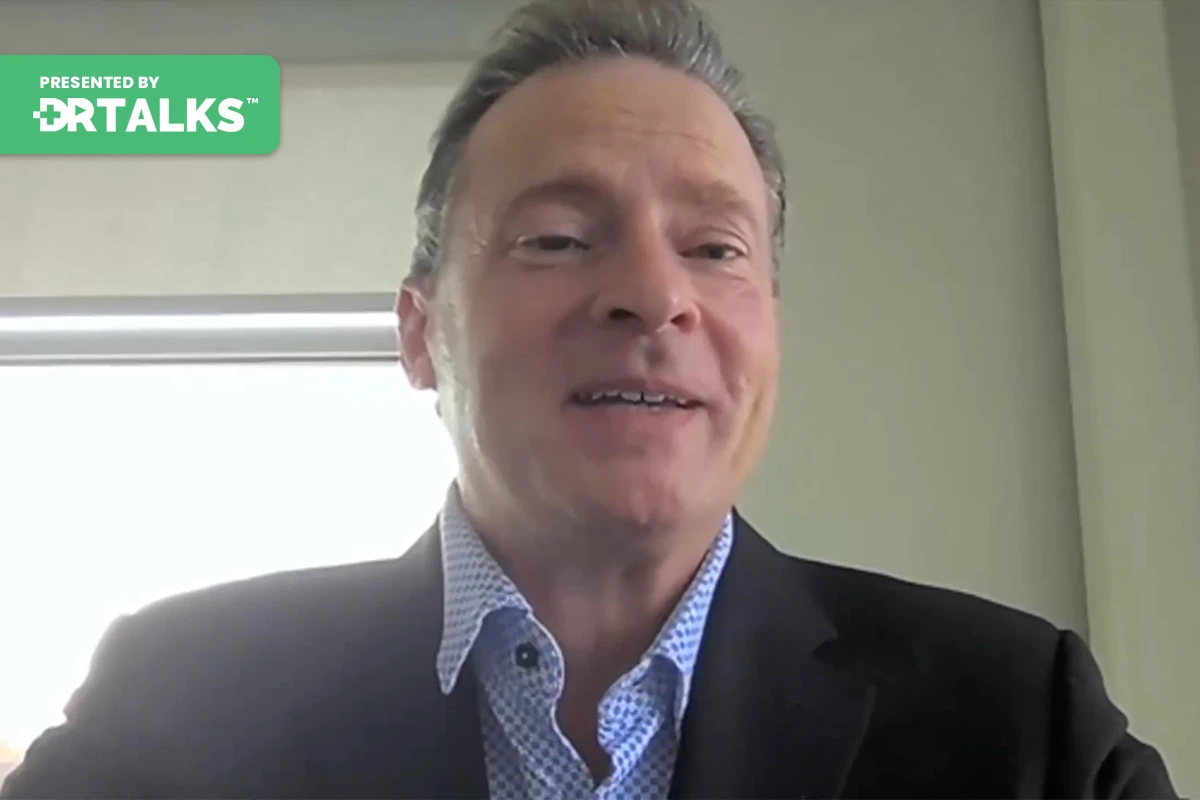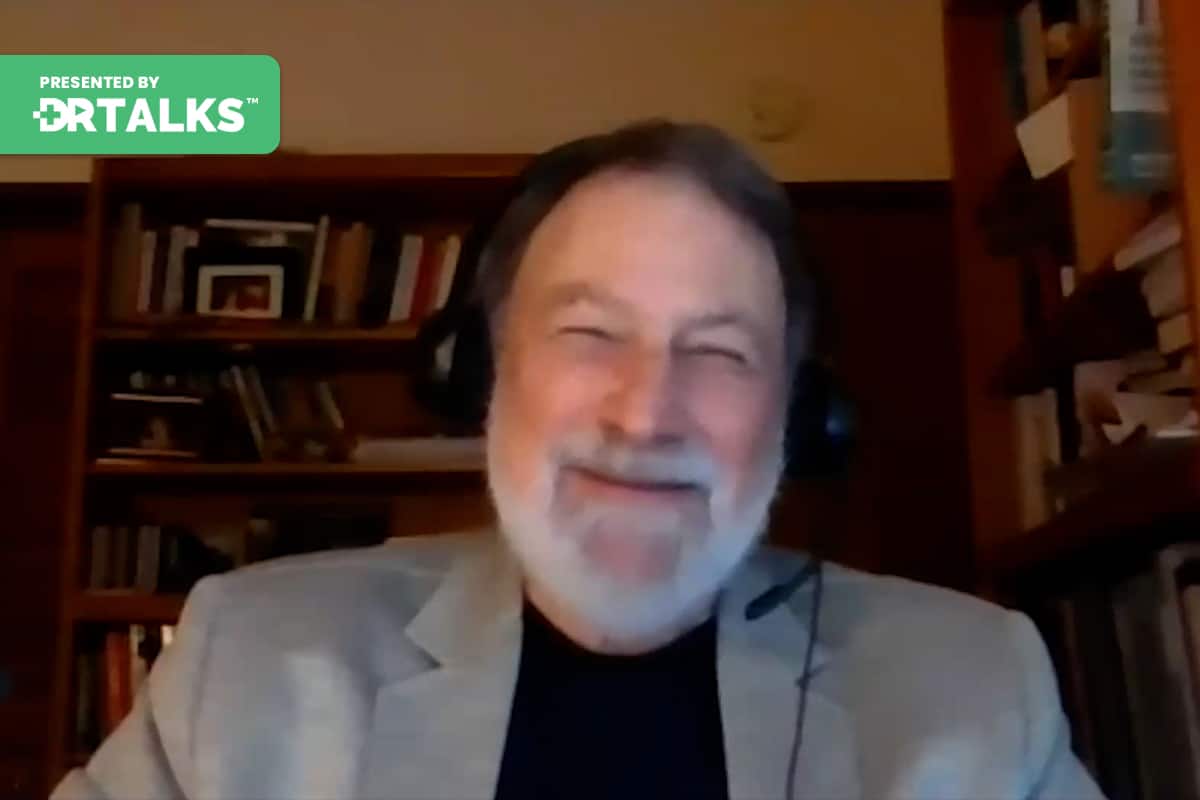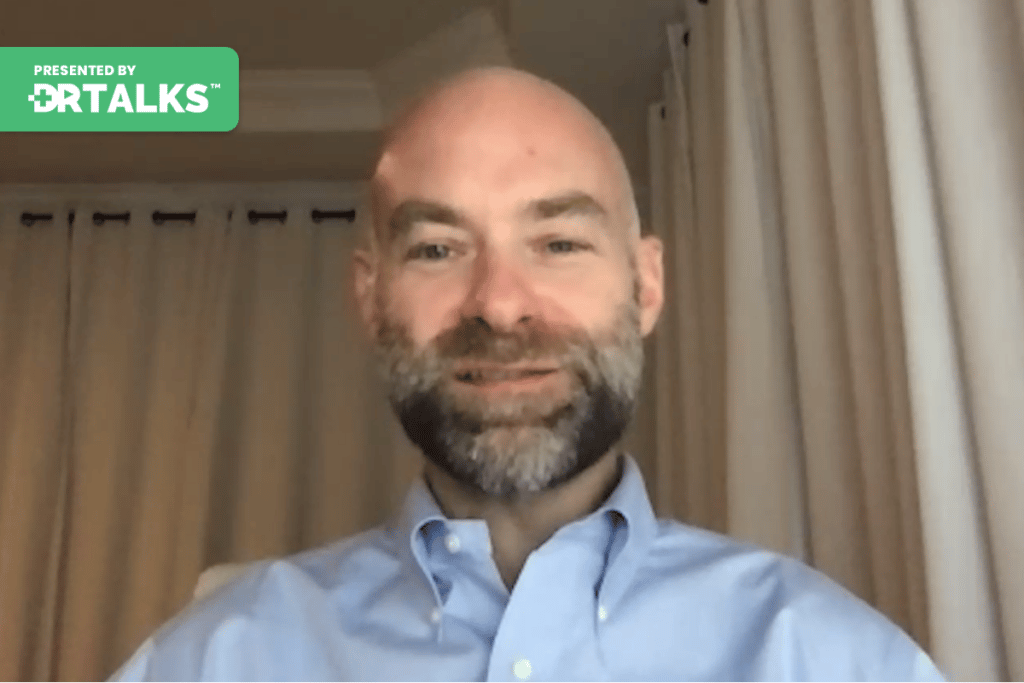Join the discussion below
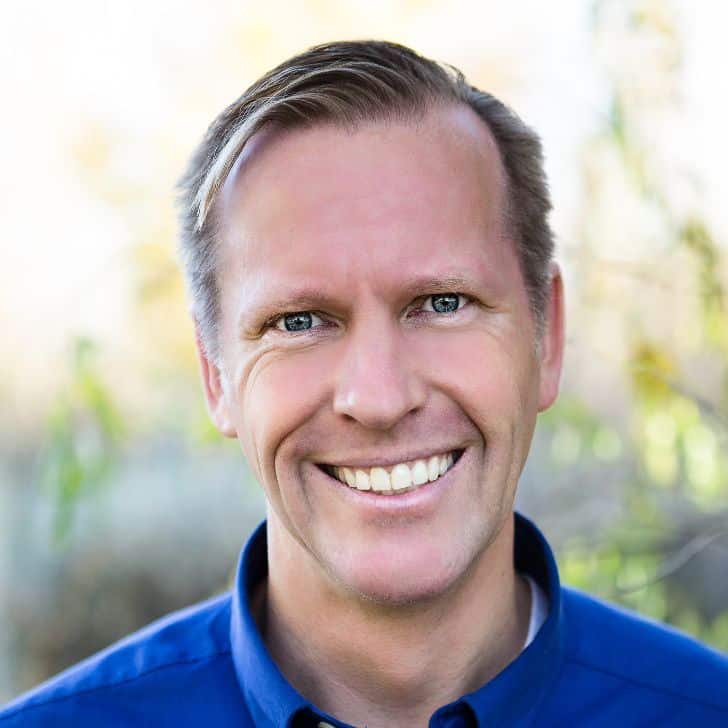
Michael Karlfeldt, ND, PhD, is a Board Certified Naturopath (CTN® ) with expertise in IV Therapy, Applied Psycho Neurobiology, Oxidative Medicine, Naturopathic Oncology, Neural Therapy, Sports Performance, Energy Medicine, Natural Medicine, Nutritional Therapies, Aromatherapy, Auriculotherapy, Reflexology, Autonomic Response Testing (ART) and Anti-Aging Medicine. Dr. Michael Karlfeldt is the host of... Read More
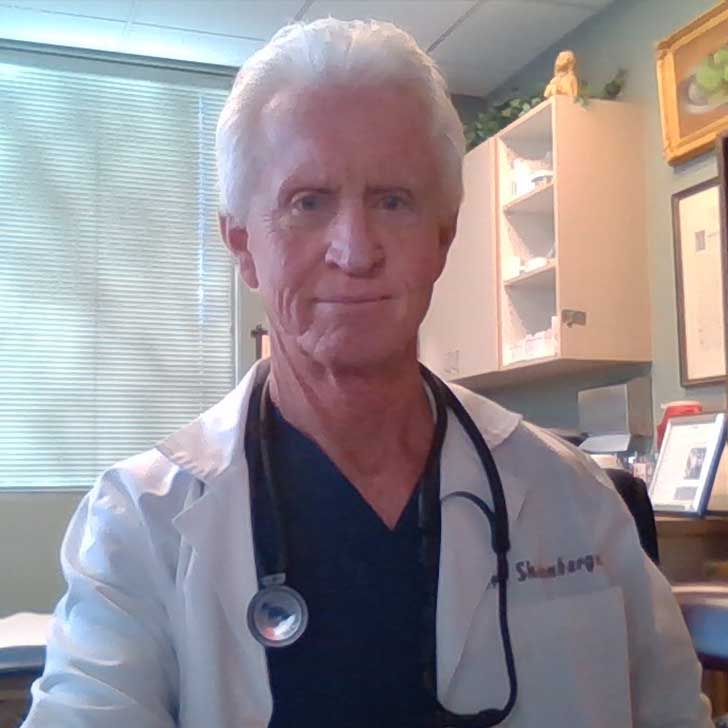
Frank Shallenberger, MD, HMD, ABAAM
Dr. Shallenberger has been practicing frontline medicine since 1973. In the early 80s he began using ozone therapy as a treatment for infectious diseases not responsive to conventional approaches. He published a peer reviewed paper in 1998 in which he described his theory that non-responsive chronic infectious diseases are primarily... Read More
- Ozones impact on the mitochondria
- The importance to measure mitochondial health
- Using ozone for antiaging, when battling cancer and chronic infections
Related Topics
Michael Karlfeldt, ND, PhD
Well Dr. Shallenberger it’s so exciting to have you on this segment of a regenerative medicine summit thank you so much or you’re out of your cabin enjoying life up in Montana.
Frank Shallenberger
It’s good to be with you guys.
Michael Karlfeldt, ND, PhD
Thanks. So Dr. Shallenberger for the audience. He has revolutionized the practice of anti aging and preventive medicine by developing a method to measure mitochondrial function and oxygen utilization. He’s written two popular books describing this method at the type two diabetes breakthrough and his latest bursting with energy and has authored numerous papers in the international peer reviewed literature on ozone therapy and oxygen utilization. He is also the editor of second opinion alternative medical newsletter. He’s a developer of Pro Zone, an injection technique that has been shown to regenerate damaged joints, herniated discs and degenerative joints, tendons and soft tissues.
He has published the first paper on pros own therapy in the journal of pro therapy entitled Pro Zone regenerative regenerating joints and eliminate pain. Dr. Shallenberger is a founding board member of the International bio oxidative Medical Foundation. He also formed and incorporated the first medical ozone society in the United States, the American Academy of Ozone Therapy where he serves as a president. Dr. Shallenberger was elected to serve as a charter member of International scientific committee on ozone therapy has been teaching doctors from all over the world how to use ozone therapy every year since 1993. Well Dr. Shallenberger you are, there are certain people you consider as giants in the field of regenerative medicine and you are definitely one of those that’s very kind.
Frank Shallenberger
Thank you.
Michael Karlfeldt, ND, PhD
So let’s talk about ozone therapy. Ozone is just something that it has such a huge impact in so many different ways, explain a little bit about what ozone is and what it does.
Frank Shallenberger
First I want the listeners to understand that ozone um is pure oxygen. That’s what it is. It’s a gas and it’s pure oxygen, but it’s different than the oxygen that we normally breathe in room air and the oxygen you would get in the hospital. And asthma such as that oxygen consists of two oxygen atoms. Ozone is more powerful because it consists of three oxygen atoms. And that third oxygen atom is the thing that makes all the difference in the world. And what that third oxygen atom does is it stimulates the processes involving oxygen and other processes as well. Way more than regular oxy. So when people get sick, for example or they have a problem of sorts, we can talk about paying, we can talk about all kinds of interesting things, but when they get one of these problems inevitably healing of that problem and involves oxygen. And oftentimes regular oxygen just isn’t enough to do it.
And so what will happen then is we take ozone and we make ozone basically we buy regular oxygen with two oxygen atoms run it through a converter box and in the converter box that can convert it the two oxygen atoms to a three ox at a molecule called ozone. And then we can minister that ozone into patients in various ways. The incredible thing about ozone therapy, Michael is that it’s so applicable. I don’t know of anything in all of medicine. That is just absolutely applicable. And virtually every condition you talk to. And so when you hear that you sort of think, well this sounds like snake oil. This just can’t be real. How can something like that be real? But I want the listeners to understand it can be real because this is oxygen, it forms the basis for life. So, so this is an oxygen molecule. And that’s why it’s so absolutely unique in healing of virtually anything we’re going to talk about.
Michael Karlfeldt, ND, PhD
I want to also and I want to get into that. But some of the misconceptions with ozone, I remember, you know, many, many years ago I was talking to a legislator, you know, and wanting to then bring in more ozone so that, you know, there weren’t any kind of restrictions here in our state. And he immediately went saying, well, ozone is dangerous. You know, we should stay away from ozone. And you know, so talk to me a little bit about the potential of danger, is it dangerous or is it just beneficial or the limitations on how we can use it.
Frank Shallenberger
You know, if I were talking to that legislature, I would say by the way, I’m a doctor. And everything I do is danger. I can hardly do anything that’s not dangerous. And I don’t none of my colleagues do either. They’re all dangerous. Whether it’s brain surgery or just giving penicillin, it’s all dangerous. That’s sort of the art of medicine, isn’t it? How to use dangerous things and get good results without hurting people. So that said, ozone can be dangerous. You better know what you’re doing. You better have the dosage, right? For sure. But you have to know what you’re doing just like we do with everything else and not given that it would be good, good for him to understand that he could go to the American Academy of Ozone Therapy website, click on the library tab. The library tab will take him to another site that lists over 3000 clinical papers on how ozone is effective in all kinds of things and how it’s extremely safe. One of the safer things that doctors could ever use.So I think if he looked at that and understood that and understood that yeah, everything we do is dangerous. You put those two things together. You understand this is one of the best treatments to give to patients because it’s one of the least dangerous and yet most effective things we can do for patients
Michael Karlfeldt, ND, PhD
Because nature, I mean Earth, uses Ozone to purify the air. I mean, you have all the plankton and and all the plans, they produce oxygen that then goes up and then it reacts than with the sun rays and ultraviolet rays. And triggers the creation of ozone that’s heavier than air. So that starts to go down and then start to purify oxidize pollutants in the air. So it’s our natural purifiers for our air. So it has similar effect, I would say. I think in the body where it oxidizes pollutants and viruses and so it’s a fantastic cleaning agents.
Frank Shallenberger
Absolutely. And one of the things I like people understand by the way is that ozone doesn’t really act as a drug. In other words, drug is something that we’re gonna put into the system that’s going to have a particular area of expertise. That drug is going to work in a particular situation whether it’s an antibiotic and anti hypertensive or whatever the medication involved, it’s going to work on a specific area that’s a drug. Ozone is not a drug. Ozone is, by the way, ozone is made naturally in the body. I don’t know that the legislature understands this, but our immune systems produce those when they’re working to kill bacteria. That’s part of the bacterial killing aspects of I guess it’s dangerous but it happens to be in our bodies anyway. So it’s a natural substances in our bodies that occurs as you just pointed out in the environment and detoxify. But we use our white cells use it in our body to detoxify us as well. But also it is so cool because it’s not a drug, it’s a stimulant, it’s very analogous to exercise. Can you exercise too much and hurt yourself? Yeah, you could do that, but if you exercise in a proper way, it stimulates so many things in the body to work better. Also, it’s kind of like that.
Michael Karlfeldt, ND, PhD
Yeah, I mean, like, like you say, obviously oxygen is foundation of life and here, if we are, you know, many of the diseases are due to that, the cells are oxygen deficient. So if we can just soup up the amount of oxygen that gets delivered into the system that will then have a tremendous impact on, on cell function, cell regeneration production of energy and all these different things. So how does one of the issues? And I’ve heard another one of your presentations, you’re you’re talking about that, even though we have oxygen in the cell, it doesn’t really mean that it gets utilized and we kind of need a certain signaling mechanisms in order to be able to burn that oxygen for energy in the mitochondria. And ozone can really speed that up. Because one of the issues with aging is is obviously our mitochondria is not a sufficient, which is our energy producing factor within the cell. And ozone can then help to support the production of the utilization of oxygen.
Frank Shallenberger
Yeah, so, so it kind of works this way and it’s really analogous to a combustion engine, everybody understand the combustion engine, put gasoline in, gasoline goes to the cylinders, a spark hits the gasoline and starts the engine and moving. And as long as everything is in tune, you’re gonna get a lot of energy derived from that gasoline. But think of an engine that’s out of tune, you know, it’s the something’s wrong with the tuning and I don’t understand engines, but something can go wrong with the tuning. I know that much and you won’t get the maxim gasoline, you put the gasoline in there, if it’s not too out of tune, it will still run, but it’s just not going to run efficiently, it’s not going to produce the energy that you really want out of that machine that is absolutely analogous to our mitochondria. What happens in the mitochondria is, instead of gasoline, it’s oxygen just like gasoline, oxygen is a very high energy molecule, it goes into our cells and in the cells, you know, there’s thousands of these little mitochondria bubbles and oxygen finds its way into a mitochondria.
And in there, the mitochondria processes the auction and the energy that’s what powers us up and lets us stay alive. But the problem is that over years, the longer you’re alive, the less efficient those mitochondria become. As a rule. Now, this has a lot to do with number one, your genetics, it has a law what to do with your environment, how you’re living your life. So if you’re a smoker, if you’re taking drugs, even prescription drugs, a lot of them are mitochondrial suppressants. But if you’re taking drugs, you’re a smoker, you’re eating twinkies all day, you’re doing just have a bad lifestyle. Your mitochondria are gonna become less and less efficient as you get older with the accumulation of all these problems than if you were not to have done those things.
But suffice it to say that the older longer you’re on the planet, the less likely it is those mitochondria gonna work as efficiently, which means you’re taking in the oxygen, It’s going in your mitochondria, but just like the combustion engine, they’re not processing it efficiently. And less energy is the result. And when less energy is the result, the body across the board 100% across the board, every single organ in the body, every single cell in the body is oxygen dependent. So across the board, things start to deteriorate. Now, we call that aging, we call that the aging process is this deterioration we go through. But at the foundation of that is this lack of efficiency of the mitochondria. So my my goal has always been um, let’s figure out ways for that not to happen. Let’s see if we can’t get to be 80 years old, 90 years old and still have youthful mitochondrial function, that’s my goal
Michael Karlfeldt, ND, PhD
And you in your book bursting with energy. I mean, you laid out strategies in in how to achieve that goal in order to be able to, you know, maximize our energy output because obviously when the cells are tired and not functioning well, they degenerate faster. And that is what aging is
Frank Shallenberger
Exactly. And in the book, you know, most patients, I know you can relate to this and most doctors can, most patients are looking for that magic bullet that you know, they come in and say I got all these problems. Doc give me my little magic bullet that I can just swallow this pill and everything’s cool. And so that’s what the book is not about. The book is not about magic bullet because magic bullets don’t work well unless the foundation is there for them to work well. And so in the book, I talk about the things that so often can be missed with patients and practitioners. The basics, you should exercise, you should exercise appropriately, not just exercise, but you have to exercise appropriately. You should eat appropriately, not just eat, but you should eat appropriately. And the same thing with sleep and sunshine exposure and water and staying away from toxins and all those things that we already know. I don’t think this is a news flash for most people.
But what I want people to understand is number one, you have to establish that foundation. You have to establish those basics. If you expect anything good to happen, you need to establish those basics, sorry, because you could take a magic pill all you want. But if you don’t take care of those basics, that pill is not gonna work. So take care of those basics, that’s what the book is all about. I find that most people are not gonna do anything I tell them to do unless I explain to them why they ought to be doing it. So that’s why. So like one of the chapters in the book is, is drink water. One another chapter in the book is get sunshine exposure, but people aren’t necessarily going to do that unless I explain to them why they should do that, whether the benefits. So in the book, I show benefits. I quote, studies, I try to get people to be convinced that all these things we’re talking about in the book which are just basic in nature are really critical to getting the ball rolling. Then once you get all that stuff rolling, then there’s all these other magical bullets that we can use and put that in ozone being one of them.
Michael Karlfeldt, ND, PhD
Yeah, and that’s also important for people to understand like you’re saying that the foundation and all these things and they are free sunshine is free water mostly free and exercise is free. We can do all these things, you know, laying the foundation and having that foundation, then you can take these next step and add these little bit more heroic type of treatments. You know, like, like ozone or peptides or stem cells or all these other cool things. But if you don’t have a foundation to build upon, they’re not going to have the impact. You’re just way spending a lot of money on something that is not going to have the same kind of effect. So, how would a person measure to see, you know, where am I at? Because we were talking about the mitochondria and how important it is to function appropriately. And if that is dysfunctional, that leads to so many different degenerative diseases, how do we measure to see where we are at in regards to mitochondrial activity and how that then translates to health.
Frank Shallenberger
You just asked the million dollar question, This thing is so important. How do we know if we’re doing it right? And so I want, I want the, the listeners to understand that. I believe it’s either this weekend or next weekend. There’s a big bioenergy. Some, some it someplace where all the scientists are gathered together to talk about mitochondria, mitochondrial and everything. And I’m looking at the agenda on that and I’m not surprised to find out that there’s nothing on the agenda about measuring mitochondrial function zero, not it’s not there. Why is that? That’s because nobody is doing it remarkably enough. On the one hand, they’re talking about how absolutely important mitochondria are, on the other hand, they’re saying, oh, by the way, I don’t think we need to measure it. That doesn’t make any sense at all, by anybody’s standards. And I like to put it forth to patients that, you know, measuring something is pretty important and a good example of this would be blood pressure. I think pretty much everybody agrees that high blood pressure is not good for you. We also know that at least 90% of people with really high blood pressure don’t actually notice it. They don’t feel it. It’s just going on. But it’s nothing they notice.
So how are you going to help those people unless you measure their blood pressure? You’re not gonna know who’s got high blood pressure. And who doesn’t furthermore, if you did know that somebody had high blood pressure And you couldn’t measure it. How would you know, if your therapies are working the lower it? So you, the measurement of Mitochondria is absolutely critical to this entire science of bio energetic that we’re seeing these days. And what’s so interesting is about 30 years ago I developed a method to measure mitochondrial function. It’s absolutely simple. It’s easy to do. It’s completely safe. Any doctor can do it any old clinic. And and yet people somehow are just not interested. They wanted to go straight to the magic bullet. That’s supposed to, you know, make your mitochondria work so much better. Well, I’ve been measuring mitochondrial function? Having invented and actually patented that device, which by the way, is available to practitioners, should they want to start measuring them Mitochondrial function 30 years ago. So I have a lot of experience looking at Mitochondria that don’t work so well and then finding out what makes them work better. A lot of experience doing that. And so that’s what how that book came about. I just write my own experience about what makes mitochondria work better as per the measurements that I’m doing.
Michael Karlfeldt, ND, PhD
So if the person has the foundation, they kind of follow your tips and bursting with energy and they’ve kind of made those lifestyle changes. Have you done the measurement for the individual that has done that? And then they do add on things like ozone therapy and what kind of changes have you seen in the measurement of the mighty khan?
Frank Shallenberger
Yes. So this is the whole focus that I have in my practice in a way. And that is to measure mitochondrial function in a patient. If it’s great, that’s good news for the patient that tells them given their genetics the way they’re where they’re living their life, their lifestyle and so forth. So on is matching Great with their genetics. They’re doing a great job. They may be 75 years old, but they’ve got very youthful mitochondrial function. And because of that, they’re just not going to get sick, they’re not going to get sick and if they do get sick, they’re gonna heal up very quickly versus somebody that comes in and the mitochondrial function is lousy. Now, that’s good news too, because it tells you you’ve got a problem that you didn’t know you had Most people with, I would venture to say a good 90% of people with poor mitochondrial function don’t even know they have it until it gets so bad that things start to start to unravel, then they can figure it out. But what we wanna do is identify people early on in their age that they’re already showing signs of Mitochondrial dysfunction and correct that early on before it actually causes a problem.
Michael Karlfeldt, ND, PhD
And that’s the thing. And exactly that’s $1 million dollar point I would say is that people don’t know when things are starting to go downhill. I mean, you the body is so amazing at compensating and trying to figure out compensatory measures to make you feel okay. Be able to do what it is that you need to do, make the blood all the labs to look as normal as possible until all of a sudden it reaches a breaking point where it cannot and then all of a sudden here you are with pancreatic cancer or here you are with a stroke or here you are with, you know, something serious and it would be nice than to do these type of things and then prevent, you know, work more from preventative face instead of then addressing it. You know, spending hundreds of thousands of dollars to try to save a life when we could have prevented it by supporting health.
Frank Shallenberger
That’s a really super good point. Michael people don’t always appreciate the fact that when they get, when they start to develop symptoms from a problem, that problem didn’t just start, then that problem has been going on for quite a while before their first symptoms showed up. And as you just pointed out, by the time their symptoms show first show up, the bodies more or less exhausted, most of its compensatory mechanisms and they’re in trouble. Now, this is not an easy situation, would have been and a heck of a lot easier. And we diagnosed the problem years and years before and dealt with it early on before any symptoms had showed up
Michael Karlfeldt, ND, PhD
And when mitochondria is such a foundational piece. And to measure that then you can really see if we are going downhill or if the body has a capacity to, to repair and regenerate and the immune system is active. Red blood cells are functioning well. So that’s why it becomes such a key to measure that.
Frank Shallenberger
Yeah, you know, and also a good good aspect to this is that mitochondrial function is a very sensitive and global marker for all around health, all around homeostasis because our mitochondria are so sensitive to things. They can go bad pretty quickly. They can go back from all kinds of things, even a bad night’s sleep, one bad night’s sleep could change your mitochondrial function. I’ve seen this, you know, eating, eating something really not so good for you. Like drinking a coca cola or something like that. I’ve got nothing against coca cola, but if you drink a coca cola and I measure your mitochondrial function before and after, it’s gonna be worse, I promise. So, so mitochondria are very sensitive in that way. So, when you go in and you have your mitochondria measured and they look good. That’s an all around good grade point average for you. That means like whatever your genetics are, you’re doing pretty good with them.
Michael Karlfeldt, ND, PhD
And talk to me a little bit about how lipid peroxide is play a role. I mean, because obviously we get an ozone treatment and the ozone, it doesn’t just kind of hang out in the blood forever. I mean, it gets utilized quite quickly, causing things like lipid peroxide. So, talk to me a little bit about what they do as a singling mechanism and the effect they have on things like mitochondria as well.
Frank Shallenberger
Well, so lipid peroxide or lipids, or fats and lipid peroxide are fats that have been quote Ox guys, or reacted on by oxygen. And so what happens? And you’re absolutely correct, what happens is when you inject ozone into the body or put ozone into the body. However, where you’re going to do it, it is so reactive, that third oxygen molecule makes ozone so reactive, that within a matter of seconds, even less than second, it’s going to react with something. And pretty much all it tends to react to because they’re very sub substances that are very vulnerable to reaction from oxygen or lipids or fats. So when we put ozone into the body instantaneously, it’s going to react with some of the fats in the body and produce these lipid peroxide. These are molecules that can hang out in the body for 7, 10 days.
So one dose of ozone is gone in a heartbeat. But these lipid peroxide that have produced, they can be there for a long time. And the point is that all the actions that we attribute to ozone are really due to those peroxide, the peroxide are able to enter into the cells and initiate events in the cells. Basically, I think listeners can understand it this way, they stimulate the cells to work better across the board. That’s oxidation is what stimulates cells to move. That’s why we breathe in oxygen. We have to have oxidation for these for ourselves to become effective. If the oxidation is effective, the cells are gonna work really well. And these peroxide stimulate the oxidative process after that, then we can go on and we can list well, what are each one of the various physiological and biochemical pathways that it stimulates and that gets really scientific. But overall the point is in general that’s what these rock side to side due to get into the cell and make that cell work better.
Michael Karlfeldt, ND, PhD
So when we’re talking about when the mitochondria is not functioning well, we get older you know we lose function. These lipid peroxide can then improve the function of the mitochondria to utilize oxygen better. Am I correct with that?
Frank Shallenberger
Let’s give them a little example, let’s say you got An arthritic knee. And what that means is that for various reasons the cartilage cells called the condo blasts are somehow they’re not working well. They’re supposed to be regenerating cartilage and maintaining your cartilage in your knee. But they’re not for some reason now. It’s not by accident that you don’t get arthritis in your knee until you’re old. You don’t get it as a 20 year old. Why? Because they have good mitochondria? I screwed up their mitochondria yet but you got to be about 60 years old during that last 20 years Maybe your mitochondria are not working so well. So the mitochondria in the condo blasts that are to maintain your cartilage don’t work so well. And the net result is the cartilage starts to break down and eventually some doctor says you know what you got super bad arthritis in your knee? You need some pursue Major or something.
So what if you inject ozone into that knee, what it’s going to do is it’s gonna, those lipid peroxide that are formed in that knee for the next 7 to 10 days are going to stimulate the Kandra blasts in that knee to produce and maintain cartilage better. They just make them work better. Same thing for the blast cells that have to do with the tendons that are internal to the need. Same thing has to do with the cells that are in the need of synovial cells that produce the synovial fluid, all those cells, instead of working like a 60 year old cells, they’re gonna start working more like a 30 year old cells, they’re gonna start doing what they’re supposed to be doing in the first place and regenerating things, which is the nature of how ozone can regenerate tissue, either in a need or in a rectum or anyplace you choose to put it actually,
Michael Karlfeldt, ND, PhD
It’s going to something like, like cancer for instance, and I know you you work with a lot of cancer patients and we we consider, you know, we talk about the Warburg effect, the Otto Warburg effect, you know, who received a couple of Nobel prize, you know, he should have received three, but he only got two, But there we talk about how the cells are shifting from then a fermentation, you know, from using the mitochondria using oxygen and then start to ferment sugar and and that takes place about, you know when the oxygen level of the cell kind of reach around, you know, 40% of what it should be. And so it shifts and into that fermentation as a survival mechanism. So talk to me all about how ozone can benefit in these kind of situations.
Frank Shallenberger
Yeah, you’re absolutely right. So for the listeners understand is there are two ways for cells to make energy. One is with oxygen, that’s by far and away. The most efficient way to make energy in the cells. Another way is without oxygen. They call that anaerobic energy production and that’s way less efficient and produces a ton of toxins with it. So you can go either way, you can burn, you can produce energy very efficiently using oxygen in the mitochondria or you can produce energy that’s toxic and way less efficient by not doing that. So that’s what cancer cells do. Cancer cells start shut down their mitochondria. Now, somebody might ask, well, why would a cell shut down their mitochondria? And the answer has to do with the mitochondrial ooh, limit the growth of that cell.
That’s what controls the growth rate of the cells. So people might wonder, well, you know, my fingers this big, how come it’s not continually growing, It’s not continually growing because once you reach your growth maximum, the mitochondria shut down the growth and control the growth. But cancer cells don’t do that. Cancer cells don’t stop growing. But a cancer on my finger just keep growing until I got a huge mass on my finger. They don’t stop growing. That’s their problem. Their cells that won’t stop growing. And in order to achieve that result, cancer cells have to shut down their mitochondria. So, knowing all that, one can start to realize that the cause of cancer what turns a cell which wasn’t cancerous into a cell that’s now cancerous. What makes that happen is slowly down regulating the mitochondria until the cell eventually gets to the point where it says, you know what I’m gonna do just fine without those mitochondria because I can continually grow that cell then turns cancerous.
And the guy that did the coolest work on this that I’ve seen is a scientist by the name of Thomas Seyfried who wrote a book wrote a paper called the metabolic consequences of cancer. And in there he quotes some fascinating studies where they’ll take a cancerous cell, take the mitochondria out of that cell, which aren’t working right and put it into a cell. Put those mitochondria in the cell that’s not cancerous. And guess what happened that sells, turns cancerous. Likewise, you can take the mitochondria from the healthy cell. Put it into the cancer cell, pull out the cancer mitochondria. So replace the mitochondria with healthy mitochondria that cancer cell becomes normal. So what we now start to understand is unlike what we’ve been told for the last, I don’t know 50 70 years about how cancer is caused by mutations in our genes. That may be true to some degree, but the ultimate cause is for mitochondria.
Michael Karlfeldt, ND, PhD
And that’s why obviously anything that we can do to support mitochondrial activity becomes key and also to be able to measure mitochondrial activity is a key to understand where you are at and what your risk factors are. So, what you’re doing is I mean, it’s foundational in regards to these type of chronic diseases that are on pandemic levels. I mean, we’re looking at almost one out of two that are soon to develop cancer at some point in their life. So, this is huge.
Frank Shallenberger
Yes, absolutely. I will tell you, I’ve done thousands and thousands of these mitochondrial tests, which I call bioenergy testing. But I’ve been in thousands of these test and I can tell you right now, it’s very, very uncommon for me to find a person that has good mitochondrial function that ever comes down with cancer. It happens. But it’s really rare.
Michael Karlfeldt, ND, PhD
And also we have a normal cells have a defense mechanism. You know, there’s an enzyme called cattle a’s where it kind of protect itself. And so that’s healthy cells. But then cells that are not healthy or viruses for cancer cells do not have this enzyme. So when we bring ozone into the body creating these peroxide, you know, the healthy cells protect themselves. But then the cells that we want to get rid of, they don’t have that protection. So it becomes a very targeted therapy to clear that junk out viruses pathogens cancer cells. And also sells we that are not healthy.
Frank Shallenberger
That’s the vulnerability of can they cannot deal with oxidant stress like healthy cells can. That’s the vulnerability. That’s why chemotherapy can work. That’s why radiation can kill cancer cells because both those items produce an oxidative state in the cancer cell and cancer, the healthy cells can survive it, but not the cancer cell. And so these peroxide have an anti-cancer aspect to them. And I don’t want our listeners to think that ozone therapy is a standalone therapy for cancer. It is in a very few cases which we could discuss. But in most cases it’s not a standalone therapy. But when you combine it, say with radiation or with surgery or with chemotherapy or any other sort of therapy that directly kills that cancer. When you put that in there, it certainly makes those treatments work attire.
Michael Karlfeldt, ND, PhD
And that’s the beauty is that we don’t it’s not an either or thing. You know, we want to look at what integrative integrative therapies means that we’re integrating both the medical along with some of the natural agents and tailor that to the individual to maximize the outcome. And so it’s not an either or you have to do just natural thing or do medical things it’s finding what’s perfect for the individual.
Frank Shallenberger
Right. Absolutely
Michael Karlfeldt, ND, PhD
So with ozone, what are some of the ways that an individual can introduce ozone? We talked about it you know, doing it intravenously. What are some ways intravenously and then some we’ll talk later on about some other ways to administrate. What are some common names and administrations intravenously that’s out there and which ones are the better?
Frank Shallenberger
Before so realizing that ozone is a natural substance found in the human body, every place in the human body. So you can put it every place you want. There are only two areas in the body. I have yet to put it. One is directly into the brain. Have never done that and the other is into an eyeball. Other than that I put it in ears, sinuses, nose, tongues, stomachs, rectums, vaginas, bladders, joints, spine, cerebral spinal fluid. I put it every place you can possibly think of putting it it’s very safe to do as long as you don’t know what you’re doing, it’s very safe to do. And so it has applicability every place in the human body. And I like to tell patients that, you know, no matter what your doctor’s specialty is if he’s a cardiologist or a neurologist or whatever the heck he does if he’s an acupuncturist or an ER biologist it doesn’t much matter to that extent.
Once that Doctor adds ozone therapy to what he’s already doing, he’s automatically raised up the level of his treatment. So you really put it anywhere we could talk specifically. I would say that I probably the two major things that I do with ozone are gonna one, I’m going to treat the entire body with it by treating the blood. And what we do is we pull some blood out, we resonate that blood. So the blood is now treated with the ozone and then we put the blood back in the body and the blood circulates through the entire body to get a very systemic effect so that we do that all day long at the clinic. And the other thing I very very commonly do is treat painful degenerated degenerated areas of the body anywhere from a bad neck back to a bad bladder to a bad knee, to a bad shoulder. And we in those cases we put also directly into those areas.
Michael Karlfeldt, ND, PhD
So what is the name of the first one? We pulled blood and then ozone ate it and then put it back is does that have a certain name, you know for people to know what to look for?
Frank Shallenberger
The most common term that’s been used for the last 60-70 years is a major auto chemotherapy. The auto referring to your own blood. The him referring to blood and basically major auto chemotherapy, it’s abbreviated M. A. H. So an M. A. H. Ozone therapy is that there’s various ways to do it. But in essence as we take blood out of the body hallucinated, put it back into the body
Michael Karlfeldt, ND, PhD
And when you assassinate the blood, I mean so here you have them the creation then of the lipid peroxide that we talked about that will have an impact on the body for a long period of time. You also have the oxygenation of or I’m saying oxidation of pathogens, you know that exists within that blood. So then you have them killed off and broken down so that the immune system can have kind of an immune system response to those pathogens on a systemic level. Correct?
Frank Shallenberger
Yeah. So you’re kind of referring to what I would call a vaccine like effect. It’s not a vaccine but it’s a vaccine-like effect where in the blood you got the microbe, the ozone is gonna take that microbe and bust it up. Break it up which is in essence what’s done with the vaccine. They inactivate the HVAC the bug somehow and then they give you that inactivated bug back into your system and you develop an immune response to the bug without actually getting the infection. So what we’re doing here is similar to what you just said, we’re creating a vaccine-like effect in your own body without having to take anything external to your body. So like a pharma type drug and put it in there.
Michael Karlfeldt, ND, PhD
And the beauty with this is obviously that this is targeted exactly to the microbe that exists within your system. Whatever variant whatever it may be it is very specific. Instead of trying to guess, you know, is that this variant, this flu, this you know, whatever it may be.
Frank Shallenberger
Which is why it works so well on viruses. I don’t care what virus it is. If you go to the literature you can learn about all this but I can tell you personally I’ve treated all kinds of viruses from a influence a to be the haunt the virus to West Nile, the bird flu the Ebola to the more recent virus which remains unnamed. I’ve treated all of these viruses and it’s a slam dunk crazy to say that but it really is a slam dunk because it’s as you say it’s very personal to what’s going on in your particular body.
Michael Karlfeldt, ND, PhD
And they have their others talking about major out of chemotherapy which has been around for quite some time and then they brought in things like 10 passes and then also now RHP or Eboo. How are they? Do they add anything to? Yeah. Do they add value?
Frank Shallenberger
Yes. So there’s different ways to do this therapy and the classic is the one I’ve already described. But they’re you know nuances have been developed. One of them has been this multipath type of treatment. What that adds to it is number one you can get very large doses of ozone that you couldn’t do with the first way. You can’t give large doses the first way. So with this multi pass involved special equipment. But with the multi pass type thing we can get very very very large doses which can be super helpful in some occasions. The other thing about the multi pass thing is it’s doing it under pressure so that when you expose the blood to the ozone it’s pressurized which means it’s going to create a stronger reaction.
So those are the two things: higher doses and pressurized. Then there’s this 3rd 3rd thing which is an extracorporeal perfusion towards sort of system where you’re taking blood out of one arm, running it through a system where it gets assassinated and knocks it, putting it back in the other arm. But while it’s going through that system what happens is the ozone interacts with the blood to release a number of toxins and dead bacteria. And then you have a filter device on that which filters all the junk out. So as an extra dimension. So each one of these protocols as an extra dimension and it’s nice to have all of them available if you can because in certain cases you’re going to prefer one over the other.
Michael Karlfeldt, ND, PhD
Yeah. Yeah I’ve seen we have one of those devices and some fascinating things that you see that you filter out, you know, that comes out of the blood and it’s it’s really amazing how you see that the dark blood, you know, going into the device and then the nice red, you know, a light blood coming into the other arm. So it’s really, really fun to kind of see that process. And then also, you know, for people that do not have the ability to maybe run to a clinic and they want to have a home device, maybe they are able to get like a little ozone, you know, a little machine that’s producing ozone. You know, how effective are things like rectal ozone in circulation and then also vaginal inflation. And you talked about what are some of the benefits of that and is that useful?
Frank Shallenberger
Yeah. And so I think it would be a wonderful thing really. Every family could have their own no zone set up because there’s so many things that people you don’t have to be a doctor to do. Most of these things. You do have to be a doctor to do blood and all that kind of things. But for a lot of things there are things that you can do at home that can be very effective. You just mentioned rectal treatment which is basically a no brainer. You put a catheter into the rectum, you shoot ozone gas up through that catheter into the intestines. The ozone gas gets into the intestines forms peroxide. Those peroxide is go to the liver, treat the liver and then get into the circulation and treat the whole body.
You don’t need the blood that you don’t need anything like that. And you’re gonna get a nice effective treatment that way and something you can do at home. And so I wrote a book called the Ozone Miracle, which is specifically geared for laypeople. And in the book has kind of two parts. One part talks about and explains all the various biochemical and physiological things which we haven’t really discovered. I mean discussed so, so we haven’t talked about that today, but that’s what the book. It educates people on what the what the ozone is actually doing, what these peroxide are actually doing. The other half of the book is sort of a paint by numbers book, oh your kids got a cold, this is what you do. Oh your kids got sinusitis. This is what you do or your kids got an ear infection. This is what you do. Kids got a bug bite or whatever the various problems are. There’s so much that lay people can do just on their own at home to fix to fix various problems.
Michael Karlfeldt, ND, PhD
Yeah. And that’s, I know it’s a little bit of an investment kind of original to get the setup but the the amount of things that you can, you can do with that is just tremendous and then have your book as the manual to kind of guide people through in regards to how to do it, frequency quantity, all of these different things. I mean become such a powerful device you know at that home. One of the things that I thought was really fascinating. You know you know when I come across the readings in regards to ozone and the effect. So when we get low in oxygen and we are oxidizing pollutants, we tend to then produce carbon monoxide instead of carbon dioxide. And also then more of the lactic acid you know that gets produced as well. So by ac not having enough oxygen as we try to clear things out, we’re actually producing toxic substances that can then impact our health. And then also we are more than prone to allergies if we’re not able to fully oxidize these different pollutants that we are exposed to. So by introducing more oxygen, we are less prone to allergies. And also obviously not the build up of carbon monoxide in the system which I thought was fascinating.
Frank Shallenberger
Yeah. You know one thing that’s interesting and I don’t know if you’ve ever checked this out but when let’s say you go to hold your breath and somebody is going to hold their breath and it won’t be long, it’ll be a minute, two minutes maximum three minutes where you’re gonna start feeling pretty bad and now what’s causing you to feel bad? If you were to check your oxygen level, you would find that it’s not a decrease in oxygen. You’re not decreasing your oxygen. That’s not what’s making you feel bad. What’s making you feel bad? Is the release of all these toxic substances in the absence of oxygen. Now, ultimately, in the absence of oxygen, your oxygen level will go down, you’ll die. But initially this just holding your breath demonstrates to you how critically important oxygenation is to detoxify the body to get rid of the both the internal pollutants that we have that we make and the external pollutants that we get exposed to.
Michael Karlfeldt, ND, PhD
Yeah, fascinating. Well, Dr. Shallenberger, you are, I appreciate everything that you’ve brought into the world and all the education that you’ve done and help practitioners like myself to be more effective in the therapies that we do. I thank you so much for all of that and thank you for spending the time with me today.
Frank Shallenberger
It’s been a pleasure, Michael anytime and congratulate you also and doing so much of what you’re doing to not only help your patients, but also to get this word out because this is important for people to know about.
Michael Karlfeldt, ND, PhD
Thank you so much
Downloads
